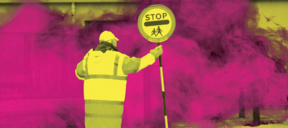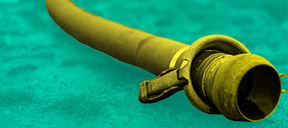Crackdown sees 50 cases launched against illegal hedge cutting this year
Action by National Parks and Wildlife Service this year represents huge increase; only 70 cases were taken across the whole previous decade.

THE NATIONAL PARKS and Wildlife Service (NPWS) has brought almost 50 prosecutions for illegal hedge cutting during the bird nesting season this year alone, data released to Noteworthy reveals.
This represents a huge increase on the period from 2010 to the end of 2019, when only 70 cases in total were taken up by the NPWS across the whole decade.
Hedge cutting should not occur during the bird nesting season and it is an offence under the Wildlife Act to cut hedge vegetation between the start of March and the end of August each year, except in express circumstances for road and safety concerns.
Hedgerows buffer Ireland’s rural road network and act as natural barriers between farm fields. They are a cultural mainstay of the countryside and play a vital role in maintaining a rich biodiversity tapestry.
A Noteworthy analysis of hedgerow surveys from over 20 counties shows that hedges help improve water and soil quality, halt soil erosion, provide food for pollinators, and act as nesting spots to birds, as well as being carbon sinks.
-
Click here to check out the findings of Noteworthy’s SHEAR FORCE investigation into hedge cutting on roadsides and farms during the bird-nesting season.
During the prohibited season, the National Parks and Wildlife Service is charged with investigating and taking enforcement action where there are concerns over the impact of cutting on wildlife.
The service appears to have dramatically ramped up its crackdown on illegal cutting over the past two years, according to data released to Noteworthy.
Significant uptick in cases
Since 2020, it has taken 71 cases to court for illegal hedge removal or destruction of vegetation, including 48 this year alone. In comparison, 70 cases were taken between 2010 and 2019.
Fines, costs and donations to charities totalling €45,700 were paid by the guilty parties this year from 17 cases alone. One case was struck out and a handful of cases are subject to appeal.
A further 27 cases are still before the Courts or with the Chief State Solicitor’s Office, with rulings in many not expected until 2022. Four cases pending hearing concern the destruction of vegetation or reclamation of land within nature sites protected under Irish or EU law.
Penalties being doled out by the courts also appear to be on the rise too. The median financial penalty issued in 2021 was €2,000 and is the highest to date, only the forth time since 2007 that the median figure was above €1,000.
In some cases, those found guilty were ordered to pay up to €2,000 to wildlife charities. In one case in Co Wicklow this year, two guilty individuals were fined a total of €11,000, the highest penalty to date.
There are currently 81 conservation rangers stationed around the country who deal with a range of enforcement activities on a day-to-today basis. The Department of Housing is in the process of recruiting more rangers and said that numbers will increase in the coming months.
Public leading the charge
In many instances, cases of suspected illegal hedge cutting are brought to their attention by members of the public. Following an AIE request, the agency provided Noteworthy with a sample of complaints received from the public over the past three years.
The majority of complaints, several of which included photos or geolocation data, concerned cutting of hedgerows in rural areas. However, there were also several urban cases reported.
In May 2018, for example, an individual sent photo evidence of hedges being cut by a business in an industrial estate. “This hedge cutting has caused serious carnage amongst breeding wildlife and I was able to count 11 nests that have been destroyed… Please do something about this,” the email stated.
In June 2018, an individual said that they were “horrified” to see hedges being cut in a Co Kildare town where the individual estimated that many nests were destroyed. “I feed the wild birds everyday and was devastated to see this happening.”
This article was supported by reader contributions to Noteworthy, The Journal’s community-led investigative platform. If you like this and our other work, consider contributing here.






